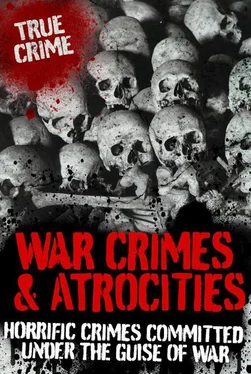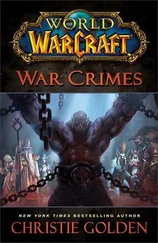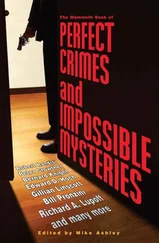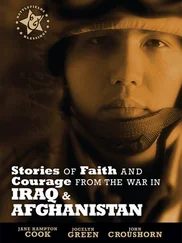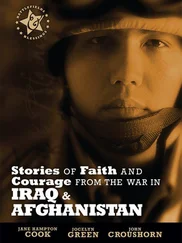The 1997 election of a separatist president, Aslan Maskhadov, made an already volatile situation far worse. Even though Russia had accepted Chechnya’s independence and the 1997 Moscow peace treaty had helped to dampen down the flames of animosity, a chilly relationship between the two nations continued. In May 1998, Valentin Vlasov, a personal envoy of Boris Yeltsin, was kidnapped, but he was later released on 13 November. It is reported that the Russian government paid as much as seven million dollars for his release. Tensions increased when in early 1999 President Maskhadov announced that Islamic Sharia law would be introduced into Chechnya in the course of the following three years.
ONSET OF WAR NUMBER TWO
Fighting broke out once again in August 1999 in the Russian area of Dagestan as guerilla forces began to filter through from neighbouring Chechnya. Following several clashes with Russian troops, the rebels managed to take control of several villages. The Russians gradually increased their military to 17,000 and started to carry out airstrikes against the rebels, forcing them to return to Chechnya. The Russians pursued the rebels with the intent of trying to end the separatist republic’s existence, and this was to be the start of a ruthless military campaign. As the years went by the war turned from a rural guerrilla conflict into an urban campaign of terror.
ATROCITIES IN CHECHNYA
Right from the onset of the conflict, Russian troops have been accused of indiscriminately bombing and shelling civilian areas, causing heavy casualties of innocent, unarmed people. They have decided to ignore the Geneva Convention and have focused their attacks on the guerrillas without taking any safeguards to protect civilians. The Russian forces have used powerful surface-to-surface bombs on many of their raids, which have caused the deaths of literally hundreds of civilians. Their bombing campaign has turned many parts of Chechnya into nothing better than a wasteland, in particular the destruction of the capital Grozny. One of their missiles blew up in the courtyard of the only functioning maternity hospital in Grozny. The explosion killed 28 women and newborn babies and seven other people. In total, at least 143 people were killed in the attacks on the capital.
In February 2000, in an attempt to try and stop the Chechen rebels, Russian forces bombed the village of Katyr-Yurt, despite the fact that the civilians were flying a white flag. As a result of the intense bombing and the arrival of a large number of fighters in the village, 20,000 refugees were forced to flee in desperation. It is thought that as many as 343 civilians were killed and there were reports of several women being raped.
For many Chechens, however, the constant bombing raids were only the beginning of the horrors they had to face. Once they came face to face with the Russian soldiers, they faced even greater dangers. There are reports of civilians being gunned down in the street and in their own yards while they waited for Russian troops to inspect their identity documents. These were not unavoidable casualties of war, these were plain and simple acts of murder.
MOSCOW THEATRE CRISIS
In October 2002, rebels took more than 700 people hostage in a Moscow theatre, demanding the end of Russian presence in Chechnya. The rebels threatened to execute their hostages if their demands were not met, and the Russians eventually ended the siege by storming the theatre. More than 100 of the hostages died as a result of the crippling knockout gas used by the Russian forces. What was even more horrifying was the fact that the Russians did not carry effective antidotes to the gas and concealed exactly what type of gas they had used to rescue workers, hampering them in their effort to save lives. Some of the victims were known to have choked on their vomit following the inhalation of gas, and many of the freed hostages were in a state of unconsciousness as they were loaded onto waiting buses and ambulances. Of the 41 militants who took part in the siege, 19 were known to have been women. Dressed in black, with their faces covered and explosives strapped to their waists, the women were known as the Chechen ‘Black Widows’. It was the first time that Russian troops had used gas to resolve a hostage situation, and there is still an ongoing investigation into why they used such a toxic deterrent, knowing full well that many of the hostages would lose their lives. In fact, all but two of the fatalities among the hostages were caused by the adverse effects of the gas.
The following year saw a wave of lawsuits filed by former hostages and those who lost loved ones during and after the raid. Over 60 plaintiffs claimed millions of dollars in compensation for moral and material damages from the Moscow government.
BESLAN SCHOOL SIEGE
On 1 September, 2004, a group of militants took control of Beslan School Number One, which was attended by nearly 900 students. At about 9.20 a.m., on a hot and sunny day, a group of heavily armed men and women with machine guns, assault rifles, hand grenades and at least half a dozen bombs and detonators stormed through the school doors. On the other side of the building, another group of terrorists ran into a courtyard. It became chaotic as the shooting began, and many of the students ran towards the school gym. Many of the older students who were waiting outside when the shooting started escaped, but the younger children were unable to get away. More than 1,200 children, parents and teachers were herded into the gym. One of the fathers was killed straight away right in front of all the hostages, including his own two sons. The terrorists wired explosives all around the gym and threatened to detonate them if their demands were not met. At first, they allowed their captives access to water and toilets, but they were not given any food. However, as the day wore on, the terrorists cut off any privileges, making the whole situation far more tense and intolerable.
Outside the school, the whole town had gathered, desperate to find out what was going to happen to their children. The terrorists started to shoot at soldiers who had surrounded the school and also into the ceiling to further intimidate their captives. One of the terrorists told a teacher that they were simply ‘fed up with the war in Chechnya’. He went on to explain that a Russian plane had killed his entire family and that he now wanted to kill, and didn’t care if it was women and children. He told the teacher that the terrorists wanted the Russian president, Vladimir Putin, to announce the withdrawal of all troops from Chechnya.
As the days went by and the captives became more and more desperate, some of the children and adults started drinking their own urine. The situation became critical as hundreds of school children were suffering from severe dehydration. The townspeople demanded action, and the end to the horrific siege started with an explosion. After the explosion, there was a pile of dead children and when the screaming subsided, there was nothing but an eerie silence. Although survivors believe that the explosion was an accident, it was enough to instigate a stand-off.
The siege was eventually ended when the Alpha Group of OSNAZ, who were special forces troops within the KGB. It took nearly ten hours before all the shooting stopped and hundreds of wounded children were rushed to hospitals in any available vehicles. The final death toll was 331 civilians (176 of whom were children), 11 commandos and 31 militants.
LARGE-SCALE ‘DISAPPEARANCES’
Another operation that has come to light during the Chechnya War is the arrest of large numbers of civilian men throughout Chechnya by the Russian authorities. These men, numbering well over 1,000, and occasionally women, have been taken to clandestine detention centres, leaving their relatives desperate to try and find their whereabouts. Some of the men were released after a few days when their families were able to bribe the Russian troops with money, weapons or ammunition. Those men that were able to return to their families consistently told of constant beatings, severe torture and even cases of rape against both men and women. One man said he had been hit with a heavy metal hammer which left him with severe back injuries. A second man told of broken ribs and that he had ongoing kidney problems as a result of the beatings.
Читать дальше
